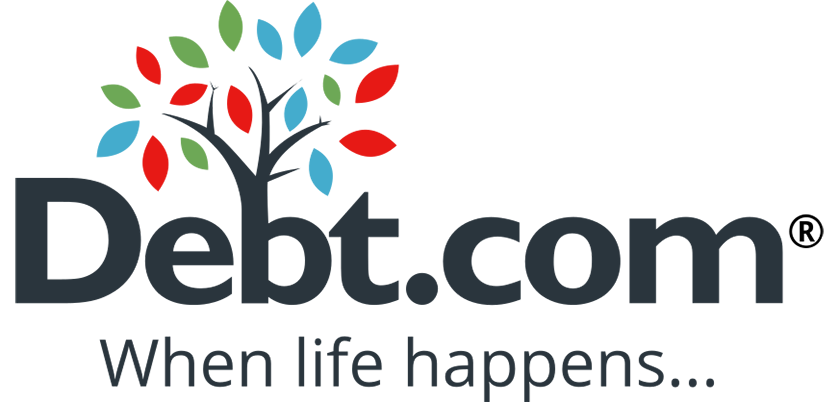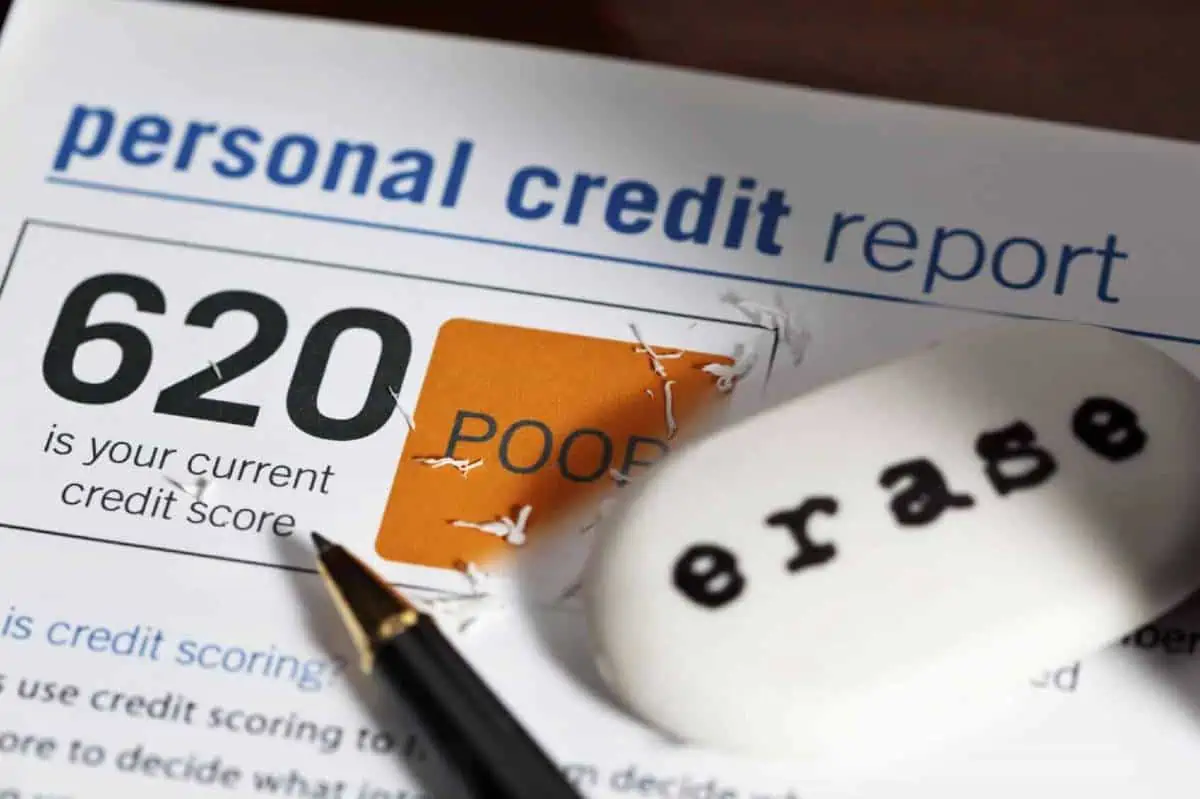You can take out a personal loan for any reason – if you can qualify. You then have to make monthly payments until the loan (plus interest) is paid back in full. These monthly installments are written in your loan agreement.
The APR on personal loans can range from 6% all the way up to 36%. Usually, the lower your credit score, the higher your interest rate will be.
If you’re concerned you won’t qualify, there are a few methods of getting a personal loan with bad credit.
Why would I take out a personal loan?
There are many good reasons why you may need to take out a personal loan. Some examples include paying for a wedding, financing an important purchase, and consolidating credit card debt.
Sometimes, you can even use a personal loan to improve your credit. How? Well, there are a few different effects a personal loan can have on your credit report. One, it will improve your credit mix by adding a different type of account to your report. Two, it will improve your credit utilization ratio by showing a larger total credit limit. But be careful – unless you make all of your payments on time, these positives will be canceled out by the negative of making late payments.
If improving your credit is your goal, there’s a simple way that you can make a loan to yourself instead of taking out a personal loan. Self enables you to create a “loan” with your own money and build your credit scores by paying yourself back in monthly installments. The money you receive is used to open a CD (Certificate of Deposit) for a small investment that earns interest over time. This way, you can build savings and build credit at the same time.
What you need to know before you get a personal loan
If you’re trying to avoid or get out of debt, personal loans are often not your friend. They can have high interest rates and, especially if you already have bad credit, can be very risky if you can’t really afford to repay the debt. Before taking that leap, here are a few things you need to know:
Only borrow what you can afford to pay back with your next paycheck.
If you take out any more than that, it will become harder and harder to pay it back as interest builds up on the balance that’s left. Not sure how much you can actually afford? Use our personal loan calculator to find out.
Predatory lenders are everywhere.
Just because someone is lending to you doesn’t mean they are doing so with good intentions. Be wary of payday loans and short-term installment loans.
Get multiple quotes.
Chances are, you won’t find the best financial institution for you on your first try. Shop around and try to get the best loan offer you can.
Look for the lowest interest rate you can find.
Interest on personal loans can catch up with you before you realize what happened. It’s difficult to get a good interest rate with a bad credit score, so just try to find the best rate you can.
Only get a personal loan if it’s absolutely necessary.
It’s often best just to avoid a personal loan altogether if you can afford it.
How will having bad credit affect the personal loan process?
Any kind of loan is difficult to qualify for when you have a poor credit score. Personal loans are no different. If your score is in the 500s or even the low 600s, expect high interest rates if you can qualify for a personal loan at all.
| Credit Score | Interest Rate Ranges |
|---|---|
| Excellent (720 – 850) | 10.3% – 12.5% |
| Good (680 – 719) | 13.5% – 15.5% |
| Average (640 – 679) | 17.8% – 19.9% |
| Poor (300 – 639) | 28.5% – 32.0% |
Trying to get a personal loan with a low credit score can feel like an uphill battle. It’s hard to qualify for any kind of loan if your credit score is below 580 because with a credit score that low, lenders don’t trust you to repay the loan.
How can I get a bad credit loan?
Method 1: Be patient and raise your score
This is the best method. It won’t work if you need money right away.
Waiting and working toward a good credit score may get you a better interest rate and save you money in the long run. Start by taking a look at your credit report and finding out where you can improve. Even if it takes a while, you’ll be surprised how many more opportunities are open to you when you have a better credit score.
Need a little extra help raising your score? SmartCredit guides you through the process of building credit all in one easy platform.
To improve your score, you need to know how it’s calculated. Your credit score is made up of 5 factors: credit history, credit utilization, credit age, new applications, and types of credit.
Improve your credit history by making payments on time and checking in with old debts. This has the greatest effect on your score of all 5 factors.
Keep an eye on your credit utilization ratio. You can calculate this by dividing your total credit balances by the sum of all your credit limits. The lower your ratio, the better. Anything above 31% can hurt your credit score.
There are a few ways you can improve this ratio. First, you can either spend less or make payments more often on your credit cards. Second, you could ask creditors for a higher credit limit. Only do this if you’re positive that you won’t overspend, though.
Your credit age is defined by how many years you’ve had a credit file. Unfortunately, there’s not much you can do to improve this but wait. However, you can avoid hurting your credit age by keeping old accounts open even if you don’t use them anymore.
Too many new inquiries on your credit can hurt your score. Try not to apply for too many new accounts within the same 6-month period.
Remember, only hard inquiries affect your credit. A soft pull of your credit, like what credit counselors do when evaluating your financial situation, does not affect your report or score.
Varied accounts on your credit report can boost your score. For example, having a mortgage, an auto loan, and a couple of credit card accounts on your report can look good – as long as they are all in good standing.
This doesn’t mean you should apply for many new or unnecessary accounts, because it may affect your new applications.
Need help raising your credit score? Let Debt.com match you with an accredited credit repair service for a free evaluation.
Method 2: Try a secured loan
Desperate times may call for desperate measures. A secured loan gives your lender assurance that you will pay back what you owe by requiring you to borrow against an asset.
These assets could include home equity, your retirement account, savings, or even your car. A secured loan is nothing to take lightly. You risk losing an important asset if you can’t pay it back. If you do end up taking this route, be very careful about paying the whole loan amount and making payments on time. You can lose important assets if you don’t repay this loan.
Get a home equity line of credit
If you’re a homeowner with enough equity in your property, you may be eligible for a low-interest, tax-deductible line of credit to spend any way you like.
Of course, tapping your home equity puts your property in jeopardy if you can’t repay the debt. If you don’t pay it back, the bank could foreclose your home. If you’re already struggling with debt, this is the last thing you need.
But if you have a reliable source of income and are disciplined about paying down an equity line, it’s an inexpensive option, regardless of your credit score.
Get a car title loan
If you own your vehicle, much like a HELOC, you can use your car as collateral for borrowing money. If you fail to pay a car title loan your car can be taken.
Get a Pawnshop Loan
If you have no large assets and are only looking for a short-term loan you can use other possessions as collateral. Jewelry, video game consoles, instruments, or electronics will be held by the pawnbroker until the loan comes due.
Get a life insurance loan or a retirement loan
Borrowing against your future can be very dangerous and costly.
Once your whole or universal life insurance policies have built up enough value you can borrow against them. Using your life insurance as collateral you can repay the loan or deduct it from the death benefits paid to beneficiaries. But, if your policy lapses or runs out you may have to pay taxes on the income.
Getting a loan from your 401(k) or 403(b) is that it must be allowed by your retirement plan. When you borrow against your retirement account you tap a limited portion of your account on a tax-free basis and repay it with interest. The outstanding balance is considered an early withdrawal if you don’t repay it on time. If you repay a 401(k) loan on time, you don’t pay income tax or a penalty.
Method 3: Get someone to cosign
Sometimes, a lender will allow you to take out a loan with a bad credit score if someone with a good credit score will cosign the loan.
Basically, when someone cosigns on a loan, they are agreeing to pay off the money you borrow if you can’t repay it. This can be a big commitment. Give your family member or friend time to think about it after you ask them to cosign.
A close friend or family member can cosign with you.
Method 4: Borrow from friends or family instead
Map everything out, from when payments are due to how much each payment will be to the length of the loan terms. Not repaying a personal loan can damage your finances, but failing to repay a friend or family member can damage your relationships.
Before you borrow from someone close to you, lay down some rules:
You may think that since you’re borrowing from someone you know, you don’t have to bother with interest. But the IRS has other ideas. Your lender could face extra taxes if they don’t charge you at least the Applicable Federal Rates (AFRs).
Treat this like a loan from a bank. You wouldn’t expect a bank to just lend you money without setting some ground rules, and you shouldn’t expect it from a family member or friend, either. Work together to come up with a timeframe, amount, and other terms that work for both of you.
After you’ve come up with your terms, write it all down in a contract. You can use a free template to make sure you’re covering all your bases. Both of you should sign it and treat it as a legally-binding document.
Method 5: Have a talk with the lender
There’s a chance that if you have a frank conversation with them about the state of your credit and your ability to pay back the personal loan, they might reconsider their initial rejection. Additionally, you may be able to prove your creditworthiness in other ways. Bank statements, W-2’s, a list of your assets or unsecured debts, or even a statement from your savings account or another bank account could help you prove to lenders that they can trust you to pay them back.
Method 6: Try a credit union
Credit unions are nonprofit organizations known for offering high levels of customer service and low fees. They’re similar to banks but are owned by their members, who typically have something in common, such as living in the same county or working in the same industry.
To find a local or nationwide credit union, visit MyCreditUnion.gov and Bankrate.com. Then contact the credit union to discuss getting a personal loan.
Compare loans from several institutions so you know you’re getting the lowest interest rate possible before you sign the final paperwork.
Method 7: Use a lending platform
Online platforms that use innovative criteria and technology may be a great alternative to traditional lenders. For instance, peer to peer (P2P) lenders, such as Lending Club, allow you to borrow directly from an individual instead of from an institution. Borrowers post a loan listing that includes the amount they want and why they want it. Investors review loan listings and choose the ones that meet their criteria.
Peer to peer lenders screen all applicants and check your credit, which becomes part of your loan listing. While your credit score is a factor, an individual investor may be more empathetic to your situation than a traditional bank.
Method 8: Find a bad credit lender
Some lenders purposely focus on lending to consumers with poor credit.
If you can’t qualify for a traditional loan, you can work with a different lender that may qualify you. They could get you a custom set of loan offers specifically designed for people with bad credit based on your current financial situation. Don’t forget to check with online lenders as well. They’re usually more lenient.
Be wary of scams, though. Predatory lenders often take advantage of people with bad credit scores who really need a loan. Read all of the terms of the loan before signing to make sure you aren’t agreeing to outrageous interest rates or shady rules.
Alternatives to personal loans for debt relief
Not sure a personal loan is the right path? Call a credit counselor for free. They can evaluate your debt and budget, then help you decide the best debt relief method for your situation. Here are some of the other options they may suggest.
Debt management program
Through a credit counseling agency, you can enroll in a debt management program (DMP). This lowers your interest rates and consolidates your payments into one. It can also protect your credit score if you want to preserve it.
Debt settlement
Settling your debt means paying less than what you really owe, which hurts your credit score, but gets you out of debt in a few years. You can try to DIY debt settlement or go through a settlement company.
Balance transfer
A balance transfer allows you to combine all of your credit card balances onto one new card. Though you may be charged a transfer fee, there is usually a promotional period with little to no interest for 12 to 18 months. If you can pay off your debt before this promo is over, you could save hundreds (or thousands) on interest charges.
Bankruptcy
If you have way too much debt that you don’t think you’ll be able to pay off, bankruptcy could be the best option for you. It hurts your credit, but it gives you a financial blank slate to start over.






